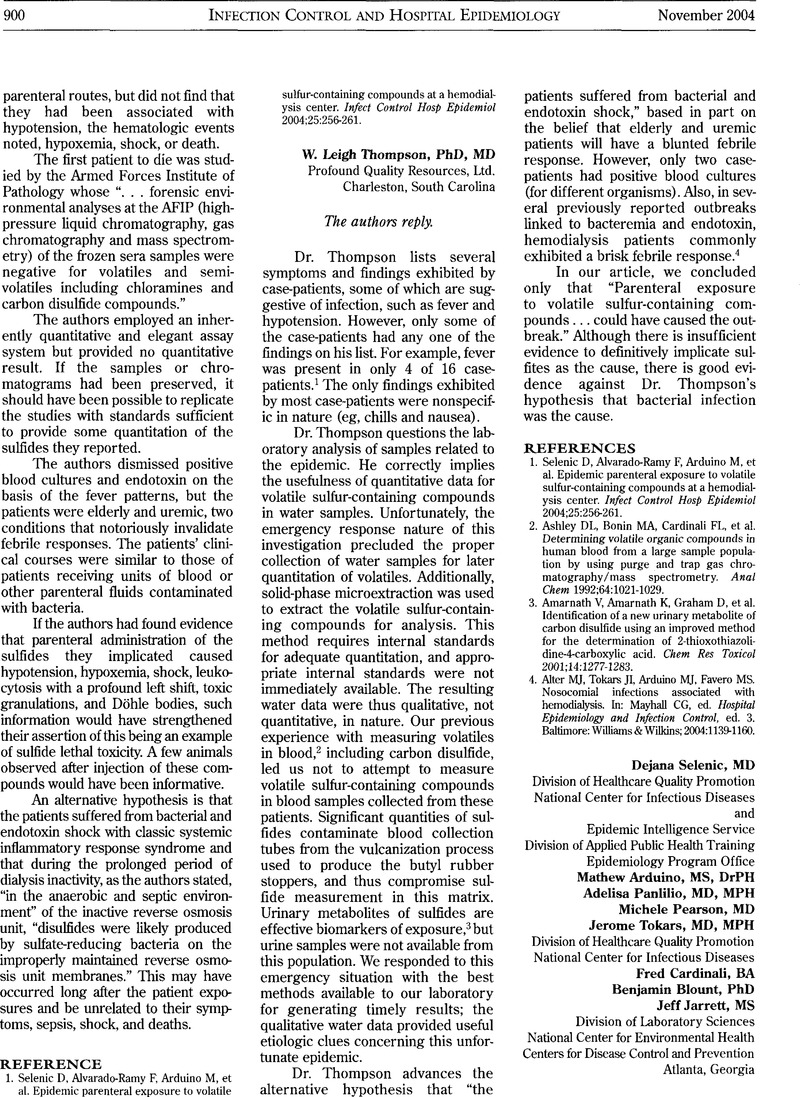No CrossRef data available.
Article contents
The authors reply
Published online by Cambridge University Press: 02 January 2015
Abstract
An abstract is not available for this content so a preview has been provided. As you have access to this content, a full PDF is available via the ‘Save PDF’ action button.

- Type
- Letters to the Editor
- Information
- Copyright
- Copyright © The Society for Healthcare Epidemiology of America 2004
References
1.
Selenic, D, Alvarado-Ramy, F, Arduino, M, et al. Epidemic parenteral exposure to volatile sulfur-containing compounds at a hemodialysis center. Infect Control Hosp Epidemiol
2004;25:256–261.Google Scholar
2.
Ashley, DL, Bonin, MA, Cardinali, FL, et al. Determining volatile organic compounds in human blood from a large sample population by using purge and trap gas chro-matography/mass spectrometry. Anal Chem
1992;64:1021–1029.Google Scholar
3.
Amarnath, V, Amarnath, K, Graham, D, et al. Identification of a new urinary metabolite of carbon disulfide using an improved method for the determination of 2-thioxothiazoli-dine-4-carboxylic acid. Chem Res Toxicol
2001;14:1277–1283.Google Scholar
4.
Alter, MJ, Tokars, JI, Arduino, MJ, Favero, MS. Nosocomial infections associated with hemodialysis. In: Mayhall, CG, ed. Hospital Epidemiology and Infection Control, ed. 3. Baltimore: Williams & Wilkins; 2004:1139–1160.Google Scholar




